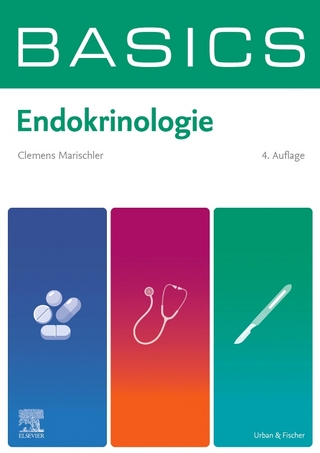
Hormonal Chaos
The Scientific and Social Origins of the Environmental Endocrine Hypothesis
Seiten
1999
Johns Hopkins University Press (Verlag)
978-0-8018-6279-3 (ISBN)
Johns Hopkins University Press (Verlag)
978-0-8018-6279-3 (ISBN)
- Titel ist leider vergriffen;
keine Neuauflage - Artikel merken
Contemporary evidence suggests that relatively low levels of industrial chemicals traditionally regarded as "safe" may mimic or obstruct hormonal activity - with potentially devastating effects. This text traces the emergence of a hypothesis which casts suspicion on a broad range of such chemicals.
The chemicals that ushered in the modern industrial age are everywhere - in pesticides, in plastics used for microwaveable containers, in dental amalgams, in the resins used on the inside of tin cans. For decades, such substances have been regarded as safe at low exposures. But contemporary evidences suggests that relatively low levels of industrial chemicals may mimic or obstruct hormonal activity - with potentially devastating long-term effects ranging from cancer and reproductive abnormalities to cognitive dysfunctions like Attention Deficit Disorder. This work explores - given the uncertainty and seriousness of the findings - how the science of chemical toxicology should be revised to account for these endocrine effects and how the scientific debate should affect public policy. The author traces the emergence of an unorthodox hypothesis that casts new suspicions on a broad range of modern industrial chemicals. At the heart of the story is the "Environmental Endocrine Hypothesis", the assertion that a class of chemicals called "endocrine disruptors" is interfering with the normal functioing of hormones in animals and humans.
The hypothesis is both attractive and troubling: attractive because it offers a unified explanation for a wide array of ills affecting modern societies; troubling because of its staggering implications for the effects of modern industrial practices. The book tells the story of how a small group of scientists has advanced this hypothesis, linking certain types of synthetic chemicals to over a dozen human and animal abnormalities. Sheldon Krimsky describes how this controversial theory was first elaborated and explores teh complex factors that have contributed to its increased legitimacy and continued controversy. His account offers a historical narrative, an analysis of the scientific issues and a case study for how scientific hypotheses originate, achieve legitimacy, influence policy and affect public consciousness. He also addresses the resulting dilemma for governments: in light of new theories, how do policymakers act to ensure public safety?
The chemicals that ushered in the modern industrial age are everywhere - in pesticides, in plastics used for microwaveable containers, in dental amalgams, in the resins used on the inside of tin cans. For decades, such substances have been regarded as safe at low exposures. But contemporary evidences suggests that relatively low levels of industrial chemicals may mimic or obstruct hormonal activity - with potentially devastating long-term effects ranging from cancer and reproductive abnormalities to cognitive dysfunctions like Attention Deficit Disorder. This work explores - given the uncertainty and seriousness of the findings - how the science of chemical toxicology should be revised to account for these endocrine effects and how the scientific debate should affect public policy. The author traces the emergence of an unorthodox hypothesis that casts new suspicions on a broad range of modern industrial chemicals. At the heart of the story is the "Environmental Endocrine Hypothesis", the assertion that a class of chemicals called "endocrine disruptors" is interfering with the normal functioing of hormones in animals and humans.
The hypothesis is both attractive and troubling: attractive because it offers a unified explanation for a wide array of ills affecting modern societies; troubling because of its staggering implications for the effects of modern industrial practices. The book tells the story of how a small group of scientists has advanced this hypothesis, linking certain types of synthetic chemicals to over a dozen human and animal abnormalities. Sheldon Krimsky describes how this controversial theory was first elaborated and explores teh complex factors that have contributed to its increased legitimacy and continued controversy. His account offers a historical narrative, an analysis of the scientific issues and a case study for how scientific hypotheses originate, achieve legitimacy, influence policy and affect public consciousness. He also addresses the resulting dilemma for governments: in light of new theories, how do policymakers act to ensure public safety?
Sheldon Krimsky is a professor in the Department of Urban and Environmental Policy at Tufts University.
| Erscheint lt. Verlag | 30.11.1999 |
|---|---|
| Vorwort | Lynn Goldman |
| Zusatzinfo | 3 line drawings |
| Verlagsort | Baltimore, MD |
| Sprache | englisch |
| Maße | 152 x 229 mm |
| Gewicht | 565 g |
| Themenwelt | Medizin / Pharmazie ► Medizinische Fachgebiete ► Arbeits- / Sozial- / Umweltmedizin |
| Medizinische Fachgebiete ► Innere Medizin ► Endokrinologie | |
| Naturwissenschaften ► Biologie ► Ökologie / Naturschutz | |
| ISBN-10 | 0-8018-6279-5 / 0801862795 |
| ISBN-13 | 978-0-8018-6279-3 / 9780801862793 |
| Zustand | Neuware |
| Haben Sie eine Frage zum Produkt? |
Mehr entdecken
aus dem Bereich
aus dem Bereich
Buch | Hardcover (2023)
UNI-MED (Verlag)
CHF 55,70


